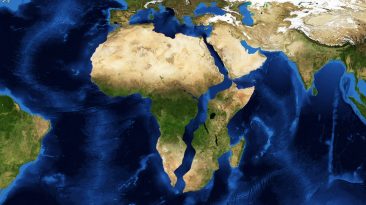The world gets 80% of its energy from fossil fuels. But based on our current levels of consumption, we could run out of oil and gas in the next 50 years. And in 100 years, we’ll be out of coal too.
Our current renewables can be unreliable, undesirable, or downright dangerous. But is there hope on the horizon?
Our oceans might actually be our most effective renewable energy source. While solar and wind rely on circumstantial weather conditions, the seas are in perpetual motion.
And with 200 trillion watts of kinetic energy to be harvested, we’d never go back to fossil fuels again. Because even if we converted just 0.1% of the ocean’s power, we’d satisfy today’s global energy demand five times over.
So then, how do we make this happen?
There are several ways to extract energy from the ocean, but so far, we’ve yet to determine a cost-effective method that preserves the natural environment, while producing enough energy to curb our dependence on fossil fuels.
The more research and resources, and the sooner we can meet these criteria, the better our chances of stymying climate change. If we were to start phasing out fossil fuels right now, we’d be totally renewable by 2100.
And if we got serious about harvesting ocean energy, there’s enough power in the sea to reduce CO2 emissions by up to 1 billion tons by 2050. So, at some point in the near future, a benevolent investor enters an eco-lab, and meets a scientist who has an idea that might just change the world.
Successful trials trigger a flood of investments, and ocean energy goes mainstream. The color of our fuel changes from black to blue, and ripples across the world.
Maritime nations like Scotland now have a great deal of influence in global affairs, taking roles that were previously held by oil nations like Saudi Arabia. Of course, it might be difficult to convince some of those oil-rich countries to go from being energy sellers to energy consumers.
Likewise, any landlocked nation would probably be wary of having to rely on maritime countries for power, so a lot of treaties and trade agreements would have to be made to make this energy transition possible. And who knows how long that could take?
Once a consensus is reached, however, we’d be on the right track. There’d actually be a likelihood of the world meeting its pre-industrial temperature goal set at the Paris Agreement.
And we’d have the infrastructure to ensure a broader circulation of energy, bringing power to parts of the world where it is currently unreliable. In this day and age, no one should have to fear blackouts or fuel shortages, but they will remain a threat until we start acting sustainably.
So whether you see change on the horizon, or feel it shifting under your feet, stay with the current, immerse yourself in new ideas.
Sources
- “Harnessing The Power Of The Ocean”. 2016. Curious. Accessed June 11 2019.
- “Watts In The Water | Hakai Magazine”. Griercon, Bruce, Magazine, Hakai. 2019. Hakai Magazine. Accessed June 11 2019.
- “Ocean energy”. 2019. iea.org. Accessed June 11 2019.
- “Mark Baker: Magic In The Moonlight – GE Reports”. Mark Baker, GE. 2014. GE Reports. Accessed June 11 2019.
- “Immediate Fossil Fuel Phaseout Could Arrest Climate Change – Study”. Carrington, Damian. 2019. The Guardian. Accessed June 11 2019.
- “Harnessing The Power Of The Ocean”. 2016. Curious. Accessed June 11 2019.



























